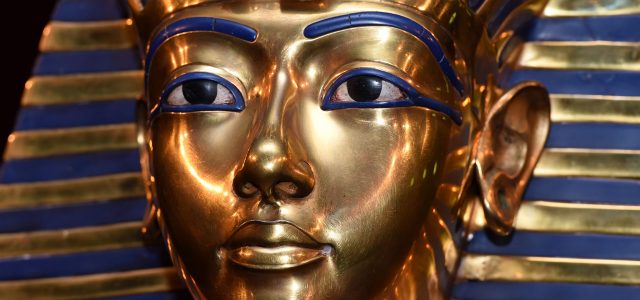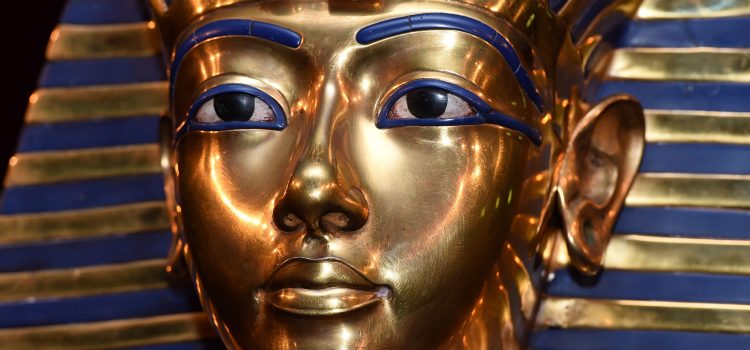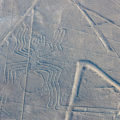


‘I curse you, I curse you, I curse you’ are words that we are familiar with. We may never have been cursed ourselves,but we understand what a curse is. It is an utterance by someone who wishes to cause you evil or inflict harm on you. Mostly we use curses when we’re joking about something, but in many cultures, a curse is a real and a terrible thing.
Things can be cursed in groups. Remember the ’27 club’ all the young amazing musicians who have died at the age of 27 – Kurt Cobain, Janis Joplin, Jim Hendrix – there have been 41 deaths of famous musicians in total. A bit odd. A curse? Maybe.
One of the most famous and most eerie curses is the ‘The Curse of the Pharaoh’, of King Tutankhamun. King Tutankhamun, or King Tut as he became known later on, was the Egyptian pharaoh of the 18th dynasty. He ruled between 1332 and 1323 BC. He was just nine or ten when he took the throne – a child pharaoh.
When King Tut died, possibly of disease, there is evidence that his burial may have been rushed. He was buried in a tomb in the Egypt’s Valley of the Kings, and there are stories that there are still blood splatters on the walls. Either way, he was entombed as people of that time were. Because his burial was rushed, it seems he was also buried in a tomb not right for him. His tomb should have been large and decorated elaborately but his tomb was smaller and not quite as beautiful as would be expected.
And since the discovery of the tomb, people who have dared to violate King Tut’s final resting place have been cursed.
The tomb was first discovered by archaeologists in 1922 which was an enormous event; it was the uncovering of a whole new (or very old) way of life. The tombs of royalty had been discovered and archaeologists needed to keep the press and people away from the site. At the same time, they wanted the newspaper coverage and to keep the people’s interest in the tombs, and so they came up with a story.
The head of the team, Howard Carter, sent out a story about a curse ‘Anyone who violates this tomb or the mummy inside, or artifacts, will be cursed.’
This curse was not new and was not really made up. There was already a talk of curses from all the tombs of royalty. Carter merely took the story and embellished it, hoping to keep intruders, grave robbers or thieves away. Tombs have been cursed for a long time.
Read the poem from Shakespeare.
‘Good frend, for Iesus sake forebeare
To digge the dust encloased heare.
Bleste be ye man [that] spares these stones,
And curste be he [that] moves my bones.’
If you don’t quite get the Shakespearean English, his epitaph says – Blessed be the man that spares these stones, and cursed be he that moves my bones.’
Shakespeare’s poem is a warning and a curse. Trouble will fall upon you if you disturb my grave.
And trouble has fallen upon people who disturbed King Tut’s grave. So much so that people are terrified of the curse of the tomb today and stay away. Because they know about the people who opened the tomb, some legally and some not, who died under very mysterious circumstances.
Archaeologists have died, tourists have died and thieves have died. And there are no explanations for their deaths.
Many people opened the tomb. Archaeologists, security personnel, tomb raiders.
The first reported death was of George Edward Stanhope Molyneux Herbert,who was the 5th Earl of Carnarvon. He was a British aristocrat, which you can see by his very lengthy name, and also an amateur Egyptologist. Herbert helped finance the search for the tombs and was active and present when the tomb was opened He died a mysterious death just one year after the tomb was opened.
A curse? It seems to be.
Others died who were well known. Howard Carter who lead the expedition died. He took the mummy out of the sarcophagus, so was the closest person to King Tut .Sgt. Richard Adamson who was guarded the tomb for seven years and was closest to the mummy, died. We’ve told you that Herbert died and Herbert’s daughter also died.
Investigator James Randi headed the investigation into The Curse of the Pharaohs. There were many deaths reported about people who had come close to, been in contact with and raided the tomb. The tomb was raided twice, by thieves, although their loot was luckily minimal.
So, how many have died. Well, James Randi had a very good conclusion.
Many died, he said. But they mostly died as they should have, either from illness or old age. With the exception of Herbert who died within a year, and probably from malaria, the other deaths were indeed natural.
Today, King Tut still remains in his tomb in the Valley of the Kings and any remains and artifacts are safely behind glass in the Egyptian Museum in Cairo. Visitors are allowed to go to the Valley of the Kings and to the tomb but there are many rules and many guards.
The curse seems to be over.
But we won’t really know will we. Curses are like that. I have been to the Valley of the Kings. The area is indeed magical and mystical. There is something spiritual in the air, something other-worldly. The area is remote, surrounded by hills and valleys. It’s quiet. It speaks of long past dynasties and worlds that were different to the one that we know. Perhaps King Tut is watching us. Perhaps all the Pharaohs are still watching.
Perhaps we’re all cursed.








